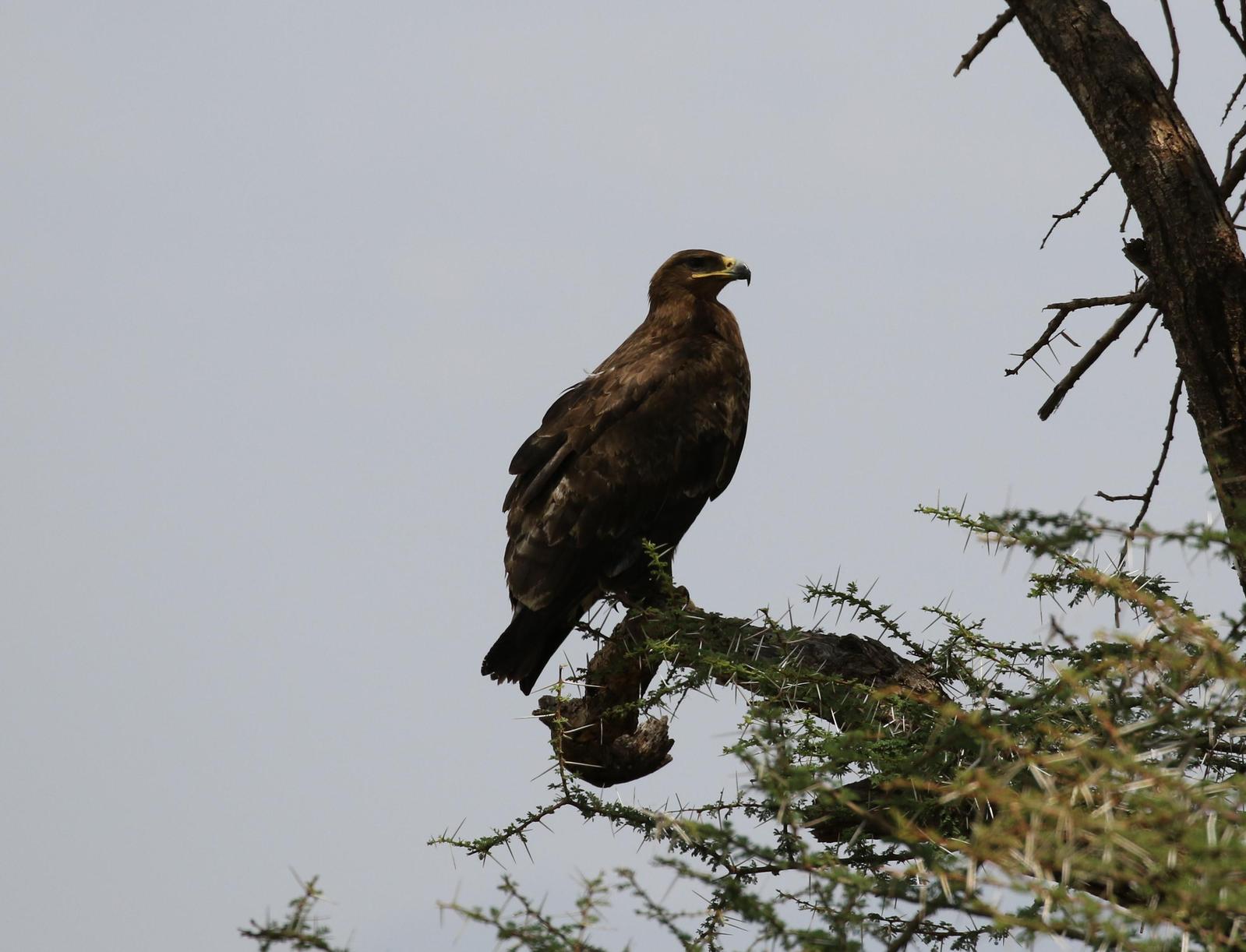The Steppe Eagle: A Majestic Bird Of Prey
Share
The Steppe Eagle, scientifically known as Aquila nipalensis orientalis, is a remarkable bird of prey belonging to the family Accipitridae. This species is a part of the suborder Falcones and the subfamily Buteoninae. Known for its impressive wingspan and keen hunting abilities, the Steppe Eagle is a fascinating subject for ornithologists and birdwatchers alike. This article delves into the taxonomy, habitat, behavior, diet, reproduction, and conservation status of this magnificent eagle.

Taxonomy
The Steppe Eagle is classified under the following taxonomic hierarchy:
- Order: Falconiformes
- Family: Accipitridae
- Suborder: Falcones
- Subfamily: Buteoninae
- Species: Aquila nipalensis
- Subspecies: orientalis
- Type: Aquila orientalis Cabanis, Journ. f. Orn., 2, 1854, p. 369, note.
This classification highlights the Steppe Eagle's close relationship with other birds of prey, particularly those in the Buteoninae subfamily.
Habitat
The Steppe Eagle breeds in a range that extends across southern Russia, from the Don River eastward through the Kirghiz Steppes to southwestern Siberia, as well as the Amu Darja and Syr Darja regions. During the winter months, these eagles migrate to milder climates, traveling through the Crimea and Romania to reach areas in Mesopotamia, the Egyptian Sudan, and Damaraland.

Physical Characteristics
The Steppe Eagle is a large bird, with a wingspan that can reach up to 2 meters (approximately 6.5 feet). Its plumage is predominantly dark brown, with lighter streaks on the head and neck. The beak is strong and hooked, ideal for tearing flesh, while the talons are sharp and powerful, enabling the eagle to capture and hold onto its prey effectively.

Diet
As a carnivorous bird of prey, the Steppe Eagle primarily feeds on small mammals, birds, and reptiles. Its hunting strategy often involves soaring high in the sky, scanning the ground for potential prey. Once spotted, the eagle will swoop down with remarkable speed and precision to capture its meal.
Behavior
The Steppe Eagle is known for its solitary nature, although it may be seen in pairs during the breeding season. These eagles are highly territorial and will defend their nesting sites vigorously. They are also known for their impressive aerial displays, which include soaring and gliding on thermal currents.

Reproduction
Breeding typically occurs in late winter to early spring. The female lays 1 to 3 eggs, which are incubated for about 45 days. Both parents participate in caring for the young, which fledge approximately 70 to 80 days after hatching. The young eagles remain dependent on their parents for several months before becoming fully independent.

Conservation Status
The Steppe Eagle is currently classified as Near Threatened by the International Union for Conservation of Nature (IUCN). Habitat loss, hunting, and environmental changes pose significant threats to its population. Conservation efforts are underway in various regions to protect this majestic bird and its habitat.
Birdwatching Tips
For birdwatchers interested in observing the Steppe Eagle, the best time to spot them is during their migration in the fall and spring. Look for them in open grasslands, steppes, and near water bodies. Binoculars and a good field guide can enhance the experience, allowing enthusiasts to appreciate the eagle's beauty and behavior from a distance.
The Steppe Eagle is not just a bird of prey; it plays a crucial role in maintaining the balance of its ecosystem. By controlling the populations of small mammals and other prey species, it contributes to the health of its habitat. Observing this magnificent eagle in its natural environment is a rewarding experience that highlights the importance of conservation efforts for avian species worldwide.